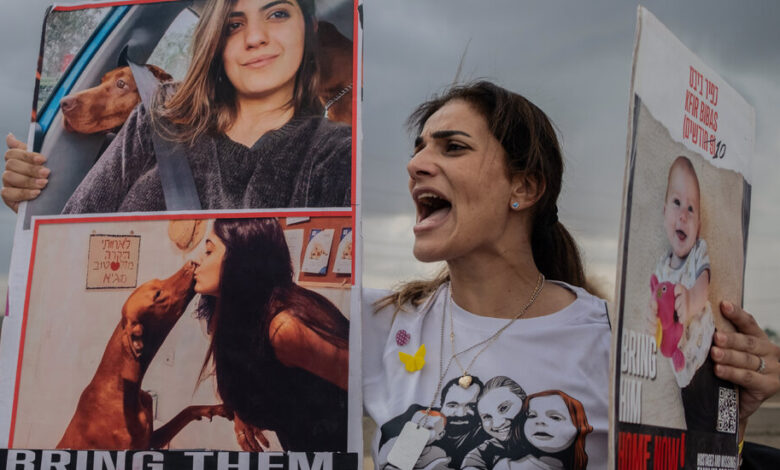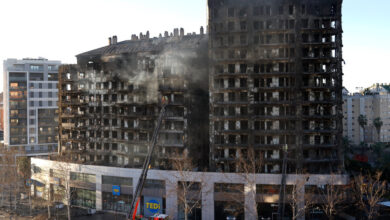
[ad_1]
A 12-year-old forced to make a propaganda video for his kidnappers. A 9-year-old snatched while visiting a friend’s house for a sleepover. A 3-year-old whose last memory of her parents was seeing them both murdered. And an infant, now all of 10 months, who has spent about a tenth of his life in captivity.
They are among the more than 30 children abducted from their homes and taken to Gaza during the Hamas-led assault on southern Israel on Oct. 7. Their faces have appeared on signs at marches in Israel and on fliers posted in cities around the world. And their plight has both galvanized a nation at war and forced Israel’s leaders to negotiate, albeit indirectly, with Hamas, the armed group they have vowed to destroy.
About 240 people were abducted by gunmen that day. Among them were individuals gravely injured in the attack or who suffered from chronic illnesses, infants and grandparents, peace activists and soldiers, citizens of Israel and foreign nationals.
“Each one of them is a person, not a number or a statistic,” said Eylon Keshet, a cousin of Kfir Bibas, the now 10-month-old. “Each one is a part of our lives and has dreams and ambitions.”
The captive children, especially, have had an immeasurable emotional impact on the traumatized country. Their fate has put the hostages at the center of the national agenda, complicating the military’s war strategy in Gaza and dividing the government about whether a deal to secure the release of at least 50 captives goes far enough and if the agreed pause in fighting would spell a premature end of the war and leave Hamas intact.
At least 36 children and teenagers, ranging in age from infancy to the final year of high school, are being held in Gaza. Now, for the first time since the war began, a deal to release dozens of the hostages is at hand, raising the hopes of the nation but creating a special kind of agony for the families desperate to learn if their relatives will be among those freed. Almost a day after the deal was announced, the families had yet to receive any information from the authorities.
“I am feeling like yesterday and the day before, only worse,” said Yael Engel Lichi, the aunt of Ofir Engel, a 12th-grader kidnapped on Oct. 7 from Kibbutz Be’eri while visiting his girlfriend.
“We are at the point of collapse,” she added.
Some, but perhaps not all, of the children are expected to be among the first hostages released in the coming days under a deal announced on Wednesday. The publicized details of the agreement include a brief pause in fighting and the phased release of at least 50 hostages in exchange for 150 Palestinian prisoners held in Israeli jails.
Little is known about the children’s whereabouts or well-being, and Hamas, the dominant Palestinian force in Gaza, has denied the Red Cross access to them. It is presumed that some are being held beneath Gaza’s streets in the group’s warren of tunnels and underground chambers.
Yocheved Lifshitz, 85, who was among just four hostages released by Hamas early in the conflict, described being marched into a network of damp subterranean tunnels under Gaza that she likened to “a spider web.”
Hamas has said that it does not hold all the captives, raising questions about its ability to free everyone. Islamic Jihad, another armed group in Gaza, released the hostage video of Yagil Yaakov, 12, who was captured along with his brother Or, 16.
Source link




